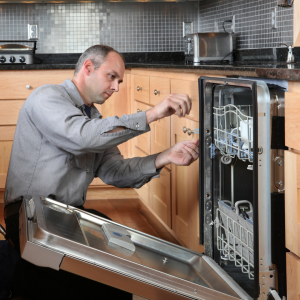Floods do more than leave puddles on the floor. Water sneaks into tiny gaps, carries dirt and germs, and keeps working even after the storm stops. A room can look fine at first, then a day later the paint blisters, doors jam, and a weird smell shows up. This guide breaks down what happens, why it happens, and simple steps that help you fight back without panicking.
What happens in the first few hours
Water always moves to the lowest point, then spreads across floors and under skirting boards. It soaks carpet, crawls into underlay, and wicks up walls. Drywall and plaster pull water upward like a paper towel, a few centimetres at a time. Timber swells because the fibres drink water. If the water keeps sitting there, it softens glue in laminate floors, makes nails rust, and can bend floorboards. Power sockets and wiring close to the floor can also get wet, which is a real risk.
Not all water is the same. A burst clean pipe is very different from stormwater that has run through soil, and different again from drain water. Dirty water can carry germs, oils, and tiny bits of rubbish. It is not safe to treat all floods as the same kind of problem. The dirtier the water, the faster you need to remove soaked items that cannot be washed.
Quick safety checks that matter
Before touching anything, think about safety. If there is standing water near sockets, power boards, or appliances, turn off the electricity at the main switch if it is safe to reach. Do not walk through water that could be touching a live wire. If the ceiling is sagging, stay out of that room. Floodwater can hide sharp objects and slippery spots. Wear shoes, gloves, and a mask if the water is dirty. If you feel unsure, step back and get advice first.
During storm season, people often mention Flood Emergency Services when they talk about floods and cleanups, and the words alone are a good reminder to act fast and keep safety first. Hearing that phrase tends to snap people into action when minutes matter. It nudges everyone to switch off power safely, move valuables up high, and get air moving to dry things out. Saying it out loud also helps a family stick to a simple plan and stay calm.
Why walls and floors change shape
Walls and floors are built from layers. There is the surface you can see, then boards, studs, insulation, and voids where air normally sits. Water slips into these spaces and stays there. Timber swells when wet, then shrinks as it dries, which can cause cracks, gaps, or warped boards. Plaster can crumble or flake because it loses strength when soaked. Metal fasteners can rust and stain the paint around them. Tiles may stay in place, yet water can sit under them and loosen the glue, which is why a tiled floor can sound hollow after a flood.
Doors and cabinets swell around the edges first, so they stick or scrape the frame. If they dry unevenly, they can twist. That is why gentle, slow drying is better than blasting one hot area while the rest stays wet.
The hidden problem, mould
Mould is a tiny plant like growth that loves damp, dark places. Give it moisture and it grows fast. In many homes, mould begins within a day or two after a flood. It starts as small dots, then spreads across paint, timber, and fabric. It does not only look bad, it can also cause musty smells and make breathing harder for some people.
To slow mould, remove water quickly, lower the humidity, and keep air moving. Cleaning hard surfaces with mild detergent and warm water helps remove the food mould uses. Porous items, such as soggy cushions, untreated timber chipboard, and certain ceiling tiles, are hard to clean once mould sets in. These often need to be thrown away if they were soaked by dirty water.
How to start drying the right way
The aim is simple, get water out, then get moisture out. Start by removing standing water with a wet vacuum or by mopping. Lift small furniture onto blocks so air reaches underneath. Take soaked rugs outside if the weather is dry and safe. Pull back a corner of carpet to check the underlay. If the underlay is still full of water, it can keep feeding moisture back into the carpet, so it often needs to come out and be replaced.
Open windows if the air outside is drier than inside, you can feel this when the outside air is cool and crisp. If it is very humid outside, keep windows shut and use fans to move indoor air across wet surfaces. A dehumidifier helps a lot, it pulls water from the air so the room dries faster. Point fans so they sweep air along walls and floors rather than blasting one spot. Keep doors inside the home open, except to rooms you want to keep dry.
Cleaning what can be saved
Hard surfaces come back well if you act fast. Wipe them with warm, soapy water, then rinse and dry. Disinfect only after they are clean, because dirt stops disinfectant from working. For walls, a gentle clean first is better than heavy scrubbing that can damage soft plaster. Timber furniture can survive if it did not stay underwater for long. Pat it dry, let air flow around it, then treat any white water marks later with finishing products once the timber is stable again.
Soft items are tougher. If a mattress or couch sat in dirty water, it is hard to make it safe again. Clothes and bedding can be hot washed, then dried completely. Kids’ soft toys that got soaked in dirty water are usually not worth the risk. If a toy only got a little wet with clean water, wash and dry it fully before use.
When walls need more than paint
If water got inside a wall, the space behind the paint needs to dry. Small holes at the base of the wall can let air move through the cavity. Skirting boards may need to come off to release trapped moisture. Wet insulation holds water like a sponge, so it often needs to be removed and replaced once the area is dry. Painting over a damp wall traps moisture and can cause peeling, bubbles, and stains that come back. Only repaint once readings show the wall is dry, or if you do not have a meter, when there is no cool, damp feel and no musty smell.
Floors, from squishy to solid again
Carpet can be cleaned and saved after clean water if drying starts quickly. After dirty water, replacement is usually safer. Timber floors may flatten out as they dry, but some boards stay cupped. Give them time to settle. Sanding too soon can make the edges thin. Laminate that swelled or separated needs replacing, since the core breaks down when wet. Tiles can be reused if the subfloor is sound, but loose grout or hollow sounds mean the layer below needs attention before retiling.
That stubborn smell and how to fix it
The musty smell is a sign of hidden moisture. Chase the source, do not just mask it with spray. Check under stairs, behind kickboards in kitchens, inside wardrobes that sit on exterior walls, and under any floor that has a cavity. Keep air moving and keep pulling moisture out with a dehumidifier until the smell fades. Cleaning drains and traps also helps, as floodwater can leave residue that smells even after the room is dry.
When to call in extra help
Some jobs are fine for a careful homeowner, others are not. If water reached the power points, if ceilings sagged, if there was sewage, or if anyone in the home has asthma or other breathing issues, get expert help. Testing, measuring moisture inside walls, checking wiring, and making sure the structure is safe are not guesswork jobs. Good help does not only dry surfaces, it tracks moisture inside hidden spaces and proves they are dry before rebuilding starts.
Simple ways to prevent the next flood
No home can stop every storm, yet small steps cut the risk. Keep gutters clear so water flows away from walls. Make sure the ground slopes away from the house. Know where the main water shutoff is, and check flexi hoses under sinks for bulges or rust. Store important papers and chargers on shelves, not on the floor. If your area floods often, raise power points and choose hard floors in ground level rooms. A small plan written on a single page helps everyone act fast, who turns off power, who moves pets, who grabs the emergency bag.
A calm plan you can follow
Floods feel scary, but a steady plan beats panic. Make the area safe, remove standing water, move air, pull moisture out, clean what can be saved, and replace what cannot. Check hidden spaces, be patient with drying, and fix the cause so it is less likely to happen again. Take photos of damage before you move things, and keep receipts for any supplies. Short notes on what you did and when can help with insurance later.
Key takeaways to keep in mind
Water keeps working after the rain stops, so acting early matters. Safety comes first, then drying, then cleaning, then repairs. Mould grows fast in damp places, so lower the humidity and keep air moving. Some items can be saved, others are better replaced for health reasons. Slow, even drying protects walls and floors from extra damage. A few prevention habits, and a simple plan, make the next storm less stressful. If a situation feels risky, pause, get advice, and return when it is safe. Step by step, a soaked room can become a normal room again.




